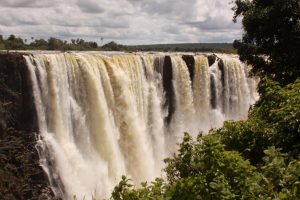 “Only two of us have had malaria so far,” said Heidi as I joined the group of seasoned overlanders in their fifth week on a truck safari from Nairobi to Cape Town. “Weren’t you taking malaria stuff?” I asked naively. “Yeah, but it doesn’t always work,” was her heart-stopping response.
“Only two of us have had malaria so far,” said Heidi as I joined the group of seasoned overlanders in their fifth week on a truck safari from Nairobi to Cape Town. “Weren’t you taking malaria stuff?” I asked naively. “Yeah, but it doesn’t always work,” was her heart-stopping response.
I added ‘contracting permanently-relapsing malaria’ to my list of African hazards to watch out for – something I thought I’d taken care of with a quick trip to Boots. Lonely Planet’s health guide to Africa, with its excruciatingly detailed descriptions of Bilharzia (not to mention rates of HIV infection in the region) had nearly put me off completely before I even got there.
To top it off, I had banked on picking up an emergency first aid kit (complete with sterile needles) at the airport, but I was informed at the check-in that since 9/11 airport chemists no longer sell them – too many sharp objects for their liking. There was nothing for it but to launch myself into Africa with nothing to protect me but some vitamin C and a packet of Immodium.
After flying into Johannesburg it was a short hop to Victoria Falls – Zimbabwe’s most successful tourist trap, on the border with Zambia. Vic Falls was a shadow of its former self. Lack of rain, combined with the regular seasonal drop in water levels, meant that much of the gorge – usually covered in millions of thunderous gallons – was exposed. It was still an overwhelming, vertigo-inducing sight, particularly when I made out some figures performing what looked like a suicidal traverse on the Zambian side of the gorge. As it turned out, I must have been the only tourist in town not to have braved the crossing for a refreshing dip in the calm waters of a rock pool set only a few metres from the waterfall’s frantic edge.
Victoria Falls town – supported by its namesake attraction and a range of extreme sports – seemed drained, not only of its usual quota of tourists, but of petrol and food too. None of which stopped the inevitable hordes of antipodeans and British gappers from partying like it was their last: the nose-diving local currency proved an irresistible lure at the casino tables of the pristine Kingdom Hotel, while around the corner taxi drivers squared up for a fight over the rare fares and even scarcer fuel that guarantee their livelihoods.
When it comes to changing money, visitors must choose between playing it by the book and getting ripped off by the ridiculous official exchange rate or doing business on the dodgy-sounding black market – where you can get more from the touts, but they’re just as likely to steal it back or report you to the police. Dealing with travel agents and waiters inside my hotel seemed to be the best idea and netted me a reasonable deal. Zimbabwe has rampant inflation, so seek advice as soon as you arrive.
Anything worth paying for – including the entrance fee to the Falls and the must-do Zambezi rafting trip – could be paid for in US$. My rafting adventure was $90 well spent, although my legs were shaking like springs as I clambered down the gorge at the start of the day. The raft was bobbing up and down like a dead insect in the swirling river; the two sheer faces of the enveloping gorge meant there was no turning back.
When you fall in, avoid getting stuck under the boat, then look for a canoe to save you. You shouldn’t be under for more than 30 seconds,- came the instructions. In the event, I was tossed from the raft like a piece of popcorn three times, including one solo attempt when I lost my contact lenses and fetched up in a completely different boat, but, since we were descending in convoy, no matter. Each time I can’t have been under the water for more than a few seconds before being spat out at the sun-drenched surface once more.
Most of the rapids are classed as grade five (out of six) and all but one are navigable, even by novices such as me. All you have to do is obey orders, like “Paddle or die!” and cling on. I wouldn’t do it again in a hurry but it was easily one of the most thrilling experiences of my life. I didn’t buy the video of our exploits, however – it wouldn’t go down too well at Christmas.
It was time to move on, although our safari was leaving a day late (for no particular reason). There was something mentioned about Mozambique, and waiting for someone, and I saw no point in pressing the guide further. In Africa, time takes on a different meaning: minutes stretch into hours and timetables are often discarded. We were assured we’d still see everything on the itinerary; we’d just see an awful lot of road on the last two days to reach Jo’burg in time.
So it was a case of getting to know the posse on board our overland vehicle, a converted truck with all mod cons – that is, a loud stereo, coach seats, coolboxes full of beer and soft drinks, and adjustable side flaps for visibility and thunderous ventilation. Under the seating deck, an elaborate storage system meant first-class meals could be prepared in the most extreme conditions, while our backpacks, tents and general clobber could be stored away in relative safety. This was to prove invaluable as we travelled through Zimbabwe, Botswana and South Africa. We didn’t have the continuous security worries of travelling independently.
The first stop was a few hours over the border into Botswana, a country described to us as Africa’s success story. Comparatively rich, due to its mineral deposits, relative tribal harmony and a decent standard of government, the country’s biggest challenge is the Aids pandemic, with an official HIV infection rate of 38%. As we pulled into Chobe Safari Lodge, a beautiful riverside pool, chalets and bar swung into view, and I briefly upgraded my expectations of our lodgings. But, alas, I received a robust reality check as we trudged past all of this to the adjacent campsite. I promised myself I’d return one day and stay next door. Still, we could use the pool and bar and the location was perfect for access to Chobe National Park and the hippo-filled Chobe river. The park was swarming with elephant during our morning game drive, as well as hippo, kudu and African storks.
Next up was an afternoon river cruise complete with onboard bar – very civilised. It meant we could get up close to a picturesque group of elephants and crocodiles, which made it almost impossible not to take a good snap.
The next morning we packed up camp and headed for the most remote location we would visit on the trip: the magical Okavango Delta. Our journey took ninety minutes in the bus, then a couple of hours’ slow progress by dugout canoe, or mokoro. We’d have been no match for an angry hippo – or even a large fish – as the canoes are so unstable you have to virtually lie down to stop them tipping over. Happily, no hippos emerged from the mud and we reached base camp by mid-morning. It was already 40’C (104’F) and there was nothing for it but to huddle in the shade of the only large tree and while away the afternoon playing cards.
All game-watching takes place at dawn and dusk, partly to synchronise with the animals’ feeding patterns, partly to avoid the heat of the day. And so it was that one fine morning, on foot and without an armed guide, I was confronted by a lion. We’d set off soon after dawn with a reassuring guide called David.
“We have very dangerous animals here,” he told us. “When they charge, run.” Sounds sensible so far, we thought, nodding seriously. “But don’t run in a straight line: run in zig zags, and if possible, in a spiral, and then up a tree.”
I glanced around to locate the nearest safety exit but could see no trees within running distance – just sand and open scrub, and a group of uncomfortable-looking humans forming the main course of an appetising breakfast plate. No time to worry though: we had soon found lion tracks in the sand, David was sure of it. “It’s a big one, he was here, now-now,” he said emphatically, and then, to further stimulate our interest, added, “and with two others.”
None of us honestly wanted to follow the tracks, but bravado overcame instinct and we trailed after David into the bush. A few unsuccessful but extremely tense minutes later, we were thinking of giving up when an almighty roar filled the air. The lioness was perhaps fifty metres away but her greeting shook my bones. Subconsciously disobeying orders to stand still, the group shuffled into a single file line behind the ice-cool David, until she had run out of sight in a breathtaking flash of speed and power. It was just a ten-second encounter, but we were thoroughly shaken and surprised at the potency of our animal instincts.
I was sad to leave the tranquility of the delta, even though it meant another fantastic mokoro ride back to dry land. It also meant we were heading out of stunningly beautiful Botswana, across the Kalahari desert. Along the way, we couldn’t help noticing the profusion of cemeteries – new graves far outnumbering old, a reflection of the impact of Aids. And at the South African border the macabre delivery of coffins was another reminder of the scale of the pandemic.
I was born in Johannesburg but left for England aged barely two, so it was with mixed feelings that I entered South Africa for the first time by road. Despite its raw edges, the country will always have a pull over me. This decade has been one of aspirations and excitement but also fear bordering on despair, and it is certainly a fascinating time to visit. The change in landscape as we crossed the border was minimal, but the quality of the roads, the ATMs, familiar-looking petrol stations and the regular electricity grid, were constant reminders of the country’s impressive infrastructure and the huge potential of the African continent.
Despite a slight school-trip feel as our pocket money was doled out along with the evening meal in Johannesburg, the expedition was about as far removed from a ‘this is Tuesday, it must be Belgium’ tour as it is possible to imagine. A group dynamic between the 20- and 30-somethings on board was encouraged by a communal approach to cooking and washing-up – and, of course, tent-sharing. As well as excellent food, life on the truck was surprisingly hygienic, with regular handwashing in Dettol and only the odd outbreak of the squits. The worst harm to befall me, for all my fears of exotic diseases, was a particularly vicious bee sting.
And there were other benefits to the organised tour: expert guides to change your currencies, discounted excursions and kindred spirits to get to know along the way. The other huge advantage was the price: just “295 for the week’s travel, excursions and camping. There was a local payment of another 50 towards food, but 20 of that was returned at the end of the trip as we were under-budget (despite the eating-out and generous spending money). If you’re looking for glamour or luxury, and would have chucked in the camping and checked in at Chobe Safari Lodge, then this may not be your bag. But if you’re looking to see an awful lot of Africa for your pennies, you couldn’t do much better.
Spotlight Chobe NP
Although relatively accessible, Chobe (an undulating plain of more than 10,000 square kilometres at an average altitude of 900m) is one of the world’s last great wilderness areas. It includes four quite separate eco-systems: the dense bush of Serondela, along the river in the northeast, where you arrive from Victoria Falls; the Savuti Marsh in the southwest; the Linyanti Swamps in the northwest and, in between these, three moister areas, great stretches of arid bush.
This variety gives huge scope for environmental choice for the park’s extraordinary concentrations of wildlife. Predators are very well represented, with lions and cheetahs moving through the migrating herds as they follow the seasonal pasture. Chobe’s signature animal, however, is the elephant, and at times the park is home to more than 100,000 of Botswana’s total national herd of around 120,000 elephants. Chobe elephants are the desert race, the largest of all, though you won’t see many big tuskers here.
The best time to visit is after the heavy rains of January to March, when wildlife is particularly dense around the water courses, particularly in the Savuti area by June. This part of Chobe is considered one of the very best game-viewing places in Africa and if you get a chance to take the truck over there, you should on no account miss it.

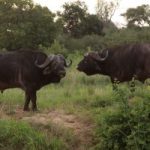
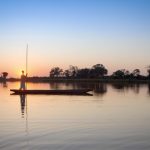
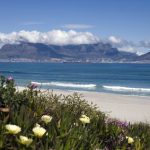
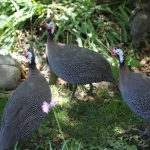
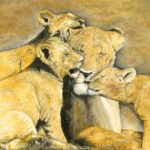

Leave a Reply